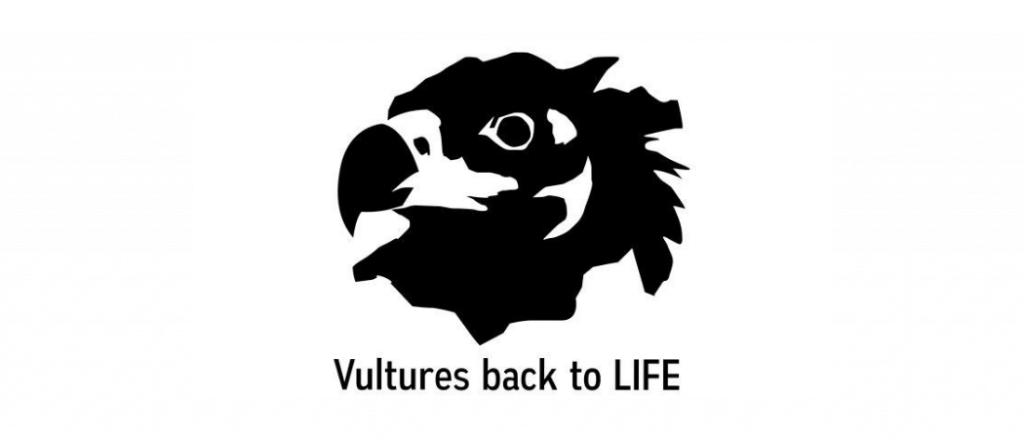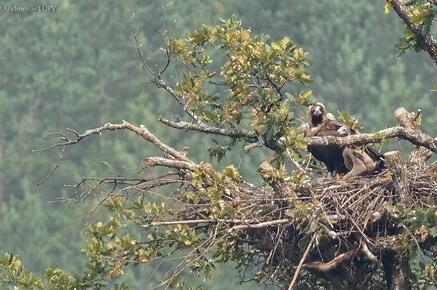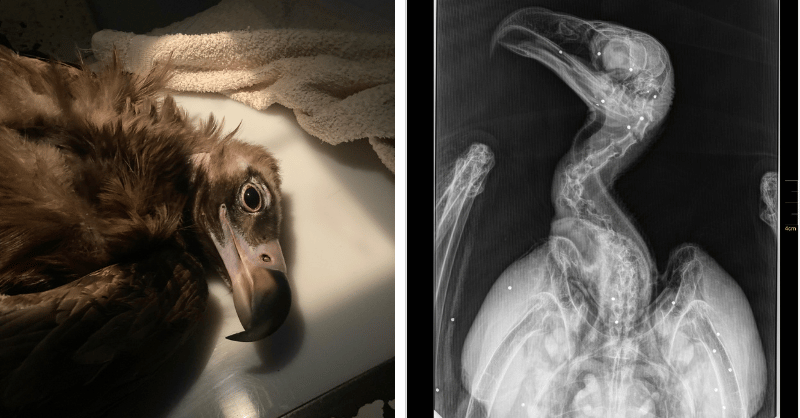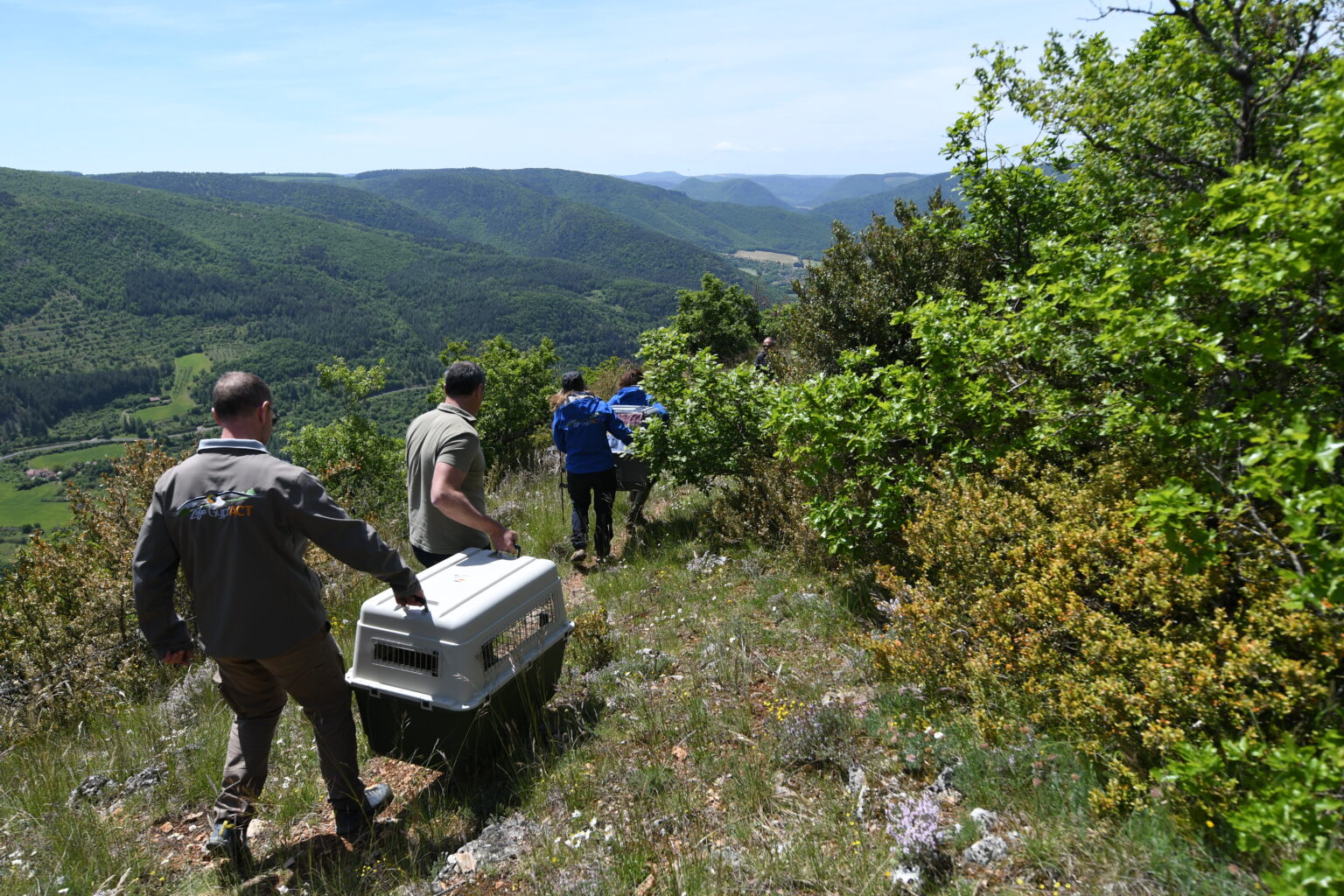
A newly published article presents the historic reintroduction of the Cinereous Vulture (Aegypius monachus) to Bulgaria. Listed as locally extinct since 1985, two breeding nuclei were established in the country after the successful release of 72 birds, between 2018-2022, with the aim of bringing back this critically endangered species.
Bringing back the Cinereous Vulture to Bulgaria
In the Balkans, the last autochthonous breeding colony is confined to Dadia-Soufli-Lefkimi Forest National Park. A number of immature birds from this colony roam across Bulgaria, but there is no record of new colonies established by natural expansion. In Bulgaria, the Cinereous Vulture became locally extinct in 1985 and a single pair was recorded in 1993 but disappeared after the breeding season.
Conservation efforts have been carried on by local partners, with the support of governmental institutions, but reintroducing the species back to Bulgaria was only possible from 2015 onwards, thanks to the Vultures Back to LIFE project, co-financed by the EU’s LIFE Programme. Between 2018-2022, 72 Cinereous Vultures were released in the Balkan Mountains, following different release methodologies, resulting in the establishment of two new breeding nuclei, in 2021 and 2022. These were the first successful reproductions recorded since the species was officially listed as locally extinct, 36 years ago.
From locally “extinct” to “critically endangered”
With the new breeding nuclei established and two successful reproduction periods, in 2021 and 2022, the species could be downlisted in the National Red Data Book of Bulgaria from “Extinct” to “Critically Endangered”. One of the colonies, with 3-4 breeding pairs and 18-23 individuals, is located in the Eastern Balkan Mountains, encompassing the Kamani Nature Park and Kotlenska Planina SPA. The second is in the Vrachanski Balkan Nature Park and has 2-3 breeding pairs and 23-29 individuals.
The project combined local efforts, led by the Green Balkans and the Fund for Wild Flora and Fauna (e.g. tackling threats and improving food and nest availability) with the contribution from Euronatur technical know-how of the Vulture Conservation Foundation (VCF), from previous reintroduction programmes in Spain and France. VCF coordinated the translocation of the birds to Bulgaria that were donated by the Junta de Extremadura and rehabilitated and quarantined at AMUS. Of the 72 birds released in Bulgaria, 63 immature birds hatched in the wild in Spain, which have been found in distress and rehabilitated, and 9 were captive-bred in zoos within the EAZA’s (European Association of Zoos and Aquaria) Ex-Situ EEP programme, also known as Cinereous Vulture EEP.
Testing two release methods
The release involved two different methods: (1) the 9 captive-bred juveniles fledged from an artificial nest (hacking method) 90 days after hatching; (2) the 63 translocated immatures were released after spending 3-9 months in an acclimatisation aviary, where they got used to their new environment and had the chance to socialise with the group. The birds were released to several areas within the Eastern Balkans Mountains (EBM) and in the Vrachanski Balkan Nature Park (VBNP).

Analysing survival rates: which release method scored better?
The Cinereous Vultures released by hacking had a lower survival rate. They all fledged, but only 2 survived the first six months. The considerable losses during the first migration and dispersion led to a survival rate of only 0.22, while the birds released from the aviary scored 0.73. This difference could be attributed to the overall lower probability of migration and dispersal of the birds released by an aviary, due to their (older) age, as they tend to initiate territorial settlement and look for a partner. After the first year, the survival rate was equal between the birds released by hacking and the aviary birds, but the hacked birds emigrated and settled elsewhere, while the others largely remained in the release area.
According to the authors, “the hacking method proved to be inefficient for establishing a nucleus of Cinereous Vultures from zero in the Balkan Mountains”. Instead, captive-bred birds can be released after a certain period of acclimatisation (delayed release) so that the birds can gain some more life experience. These results highlight the need for ongoing adaptation of techniques and tactics and provide insightful information for future similar projects.
Conservation measures to boost survival
To ensure the survival of the reintroduced birds, several conservation measures were implemented in the release sites, such as the insulation of power lines, anti-poisoning and awareness-raising campaigns. Other management actions focused on improving habitat quality, with the maintenance of feeding stations, which proved to be fundamental, particularly during winter months.
Ahead of the release, each bird was fitted with a GPS transmitter to enable monitoring of their behaviour, survival and dispersal range. After some pairs demonstrated breeding behaviour, artificial nest platforms were installed in the areas they were using the most, which has largely contributed to the establishment of the two new breeding colonies. According to the authors, the establishment phase of the Cinereous Vulture will be complete when 10 offspring are produced per year and locally fledged individuals have started to reproduce on their own.
What can hinder reintroduction efforts?
Despite the efforts, a poisoning incident killed 4 Cinereous Vultures (including the first wild-fledged chick in the area). Some died of electrocution or collision with power lines, whilst others were depredated by jackals in the first days after release. There were also significant losses during emigration; 3 were shot to death, 1 was poisoned and 3 drown in sea and water reservoirs.
The Cinereous Vulture was once widespread throughout Europe and Asia. However, due to habitat loss, hunting and poisoning, populations have declined significantly. Globally, it’s considered as “near threatened”, but in many European countries, the species is Critically Endangered or extinct.

Vultures in Europe: the importance of international cooperation
The project’s success demonstrates the effectiveness of international cooperation in conservation efforts. The ongoing monitoring and evaluation of the released vultures’ survival rates and establishment, will provide valuable insights into the effectiveness of conservation measures, and inform future reintroduction projects for this and other endangered species.
The Vulture Conservation Foundation is thankful to all partners and funders of the Vultures Back to LIFE project, which enables this outstanding outcome in Bulgaria that brings the species’ recovery and expansion across the Balkans. Meanwhile, these learnings will be very useful to the ongoing efforts to expand the Cinereous Vulture breeding population in Portugal and Western Spain, within the LIFE Aegypius Return project.
Source
Ivanov, I. et al. (2023) “First results from the releases of Cinereous Vultures (Aegypius Monachus) aiming at re-introducing the species in Bulgaria – the start of the establishment phase 2018–2022,” Biodiversity Data Journal, 11. https://doi.org/10.3897/bdj.11.e100521.





